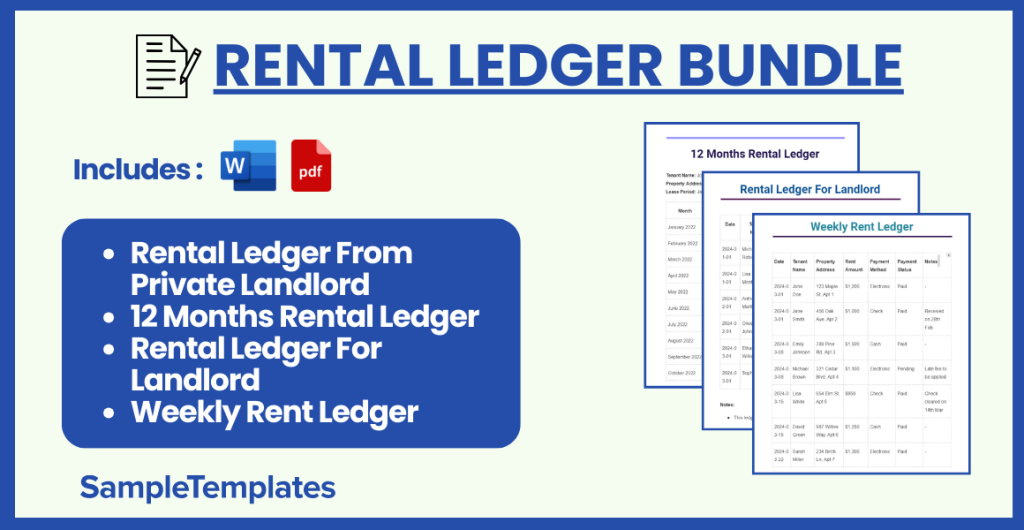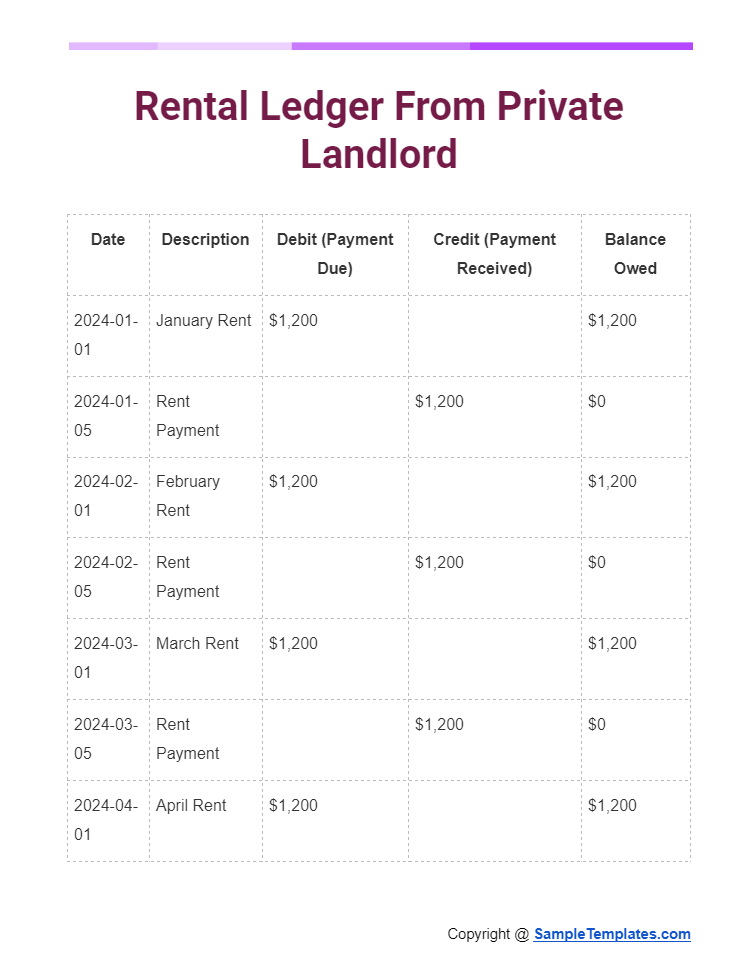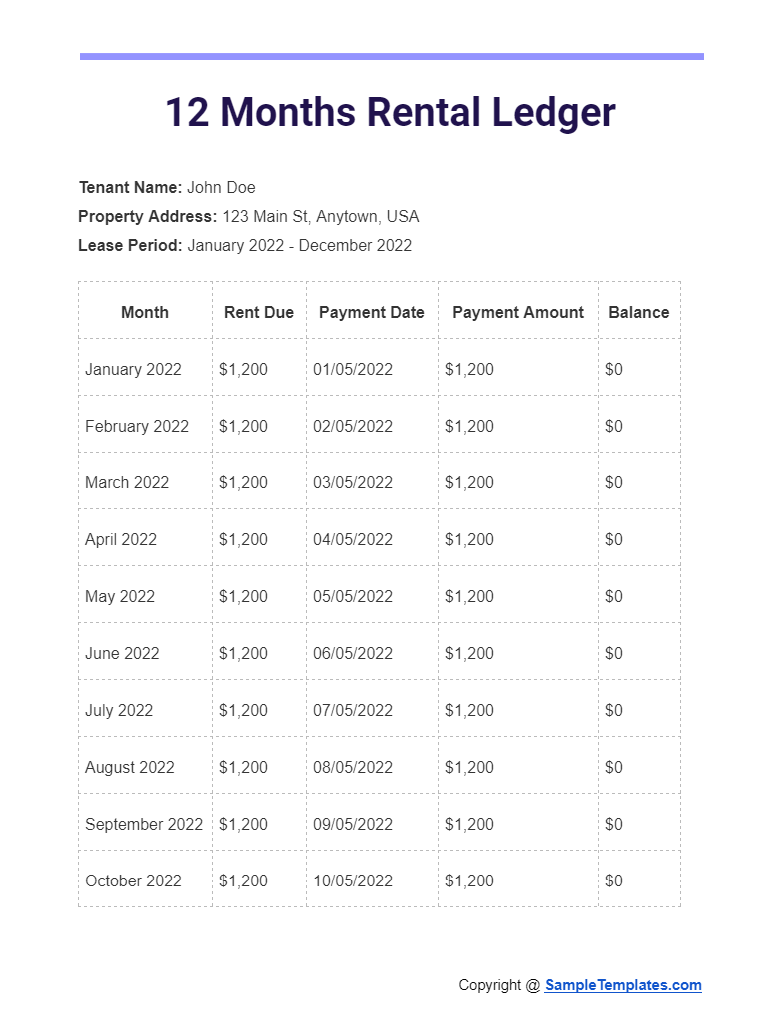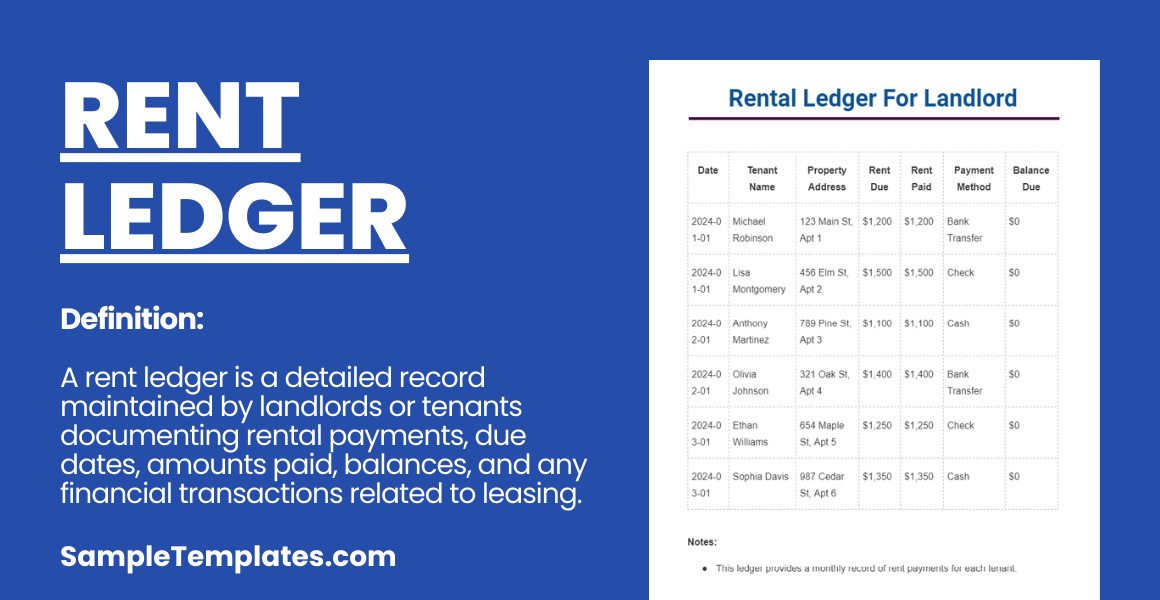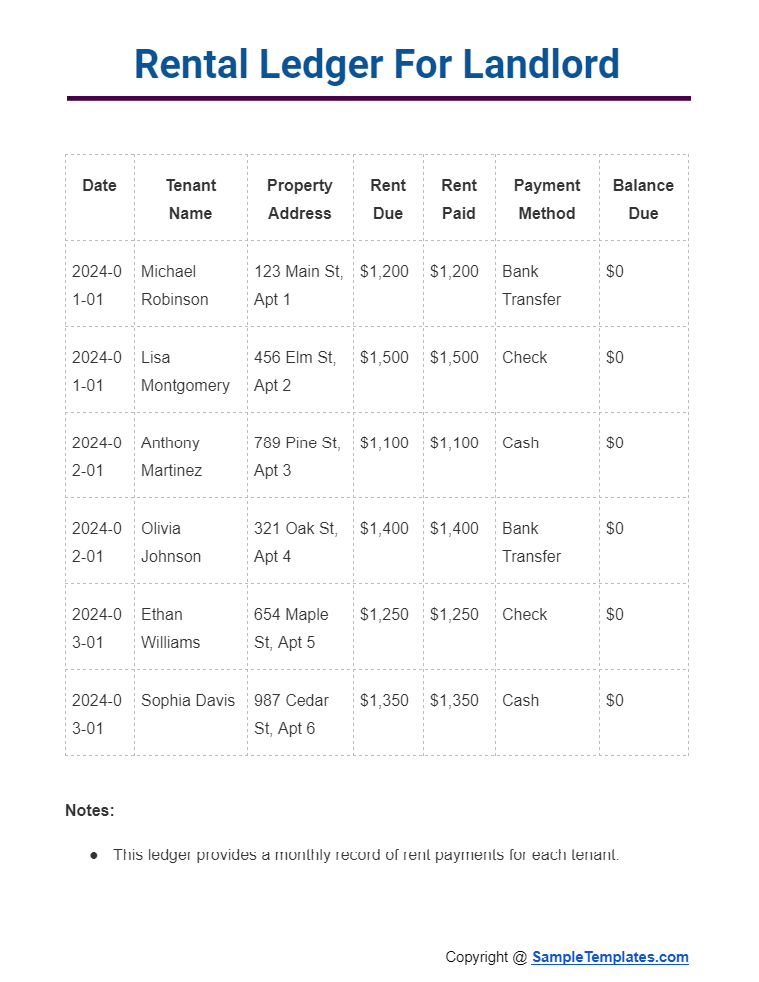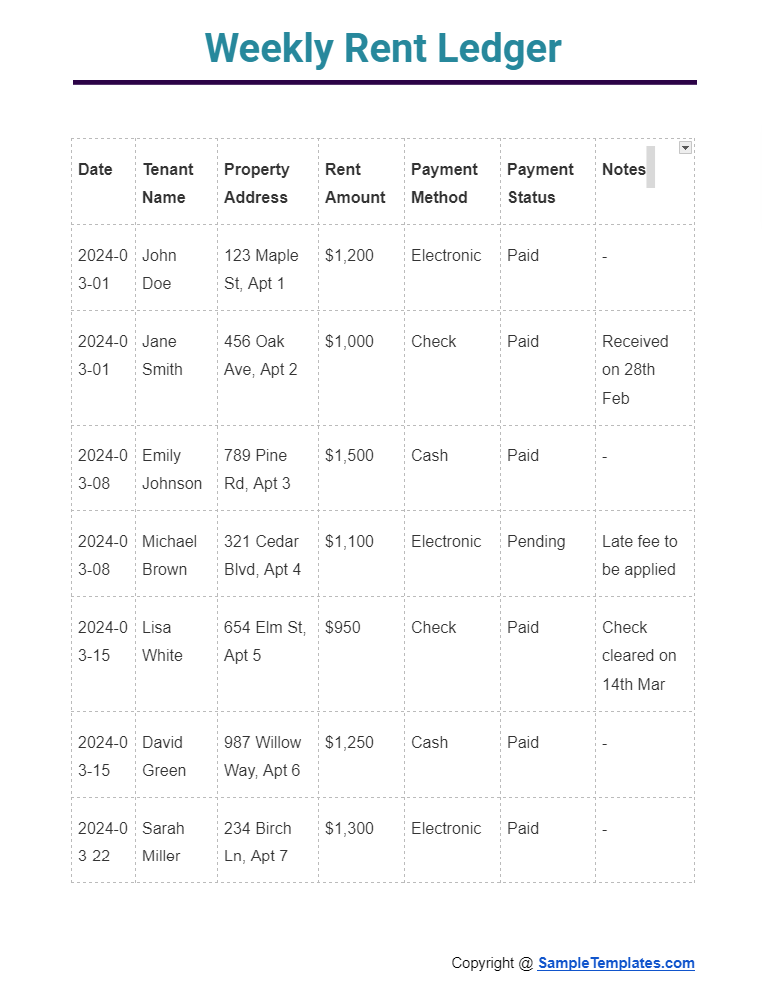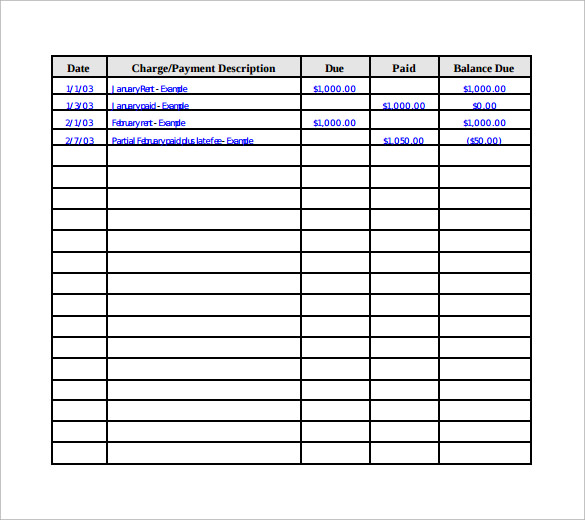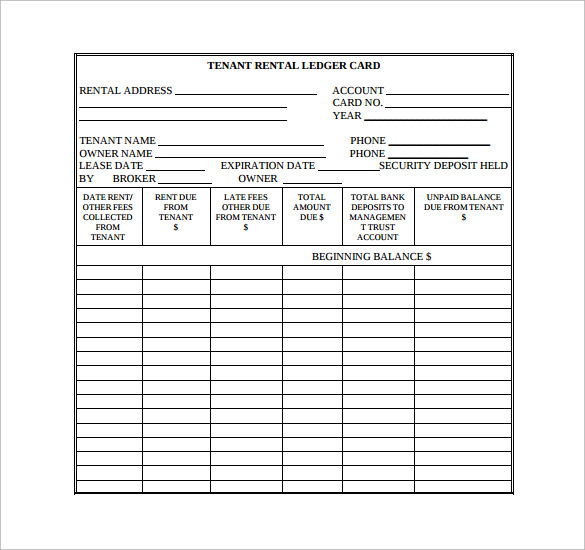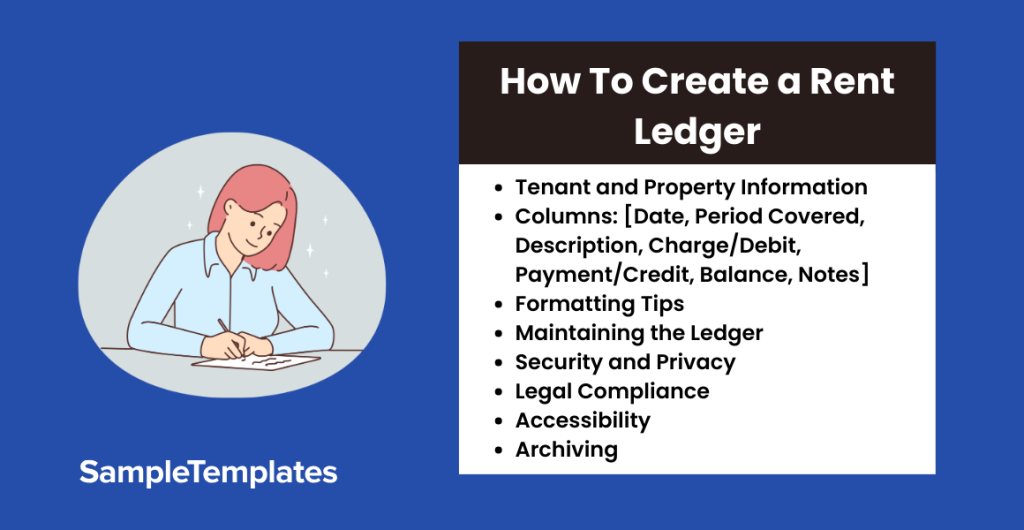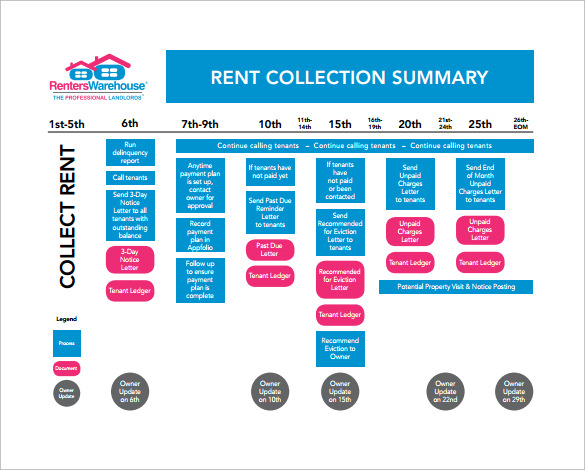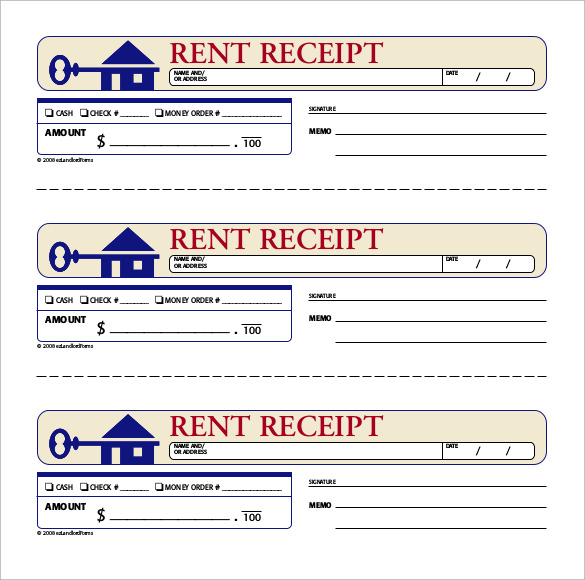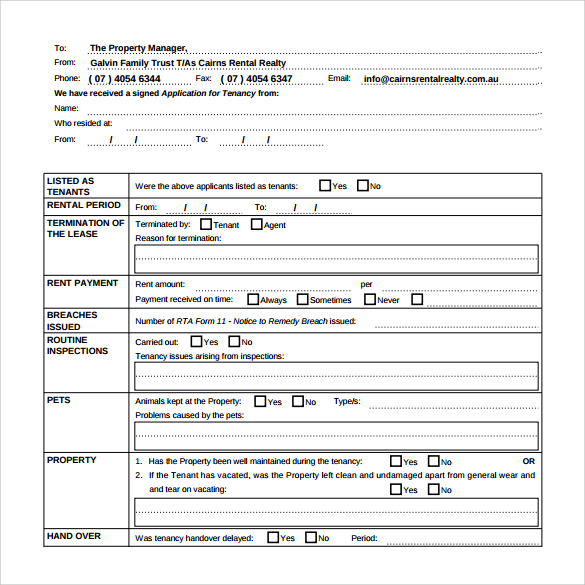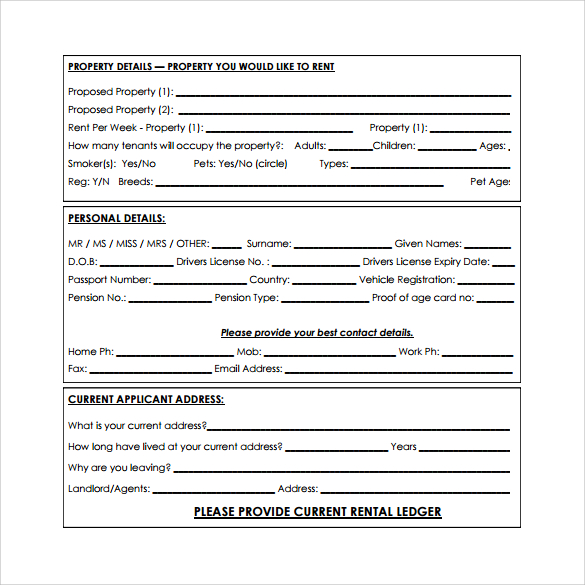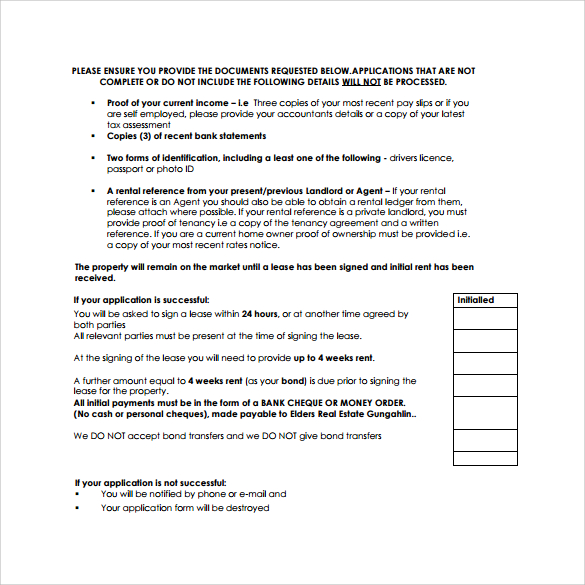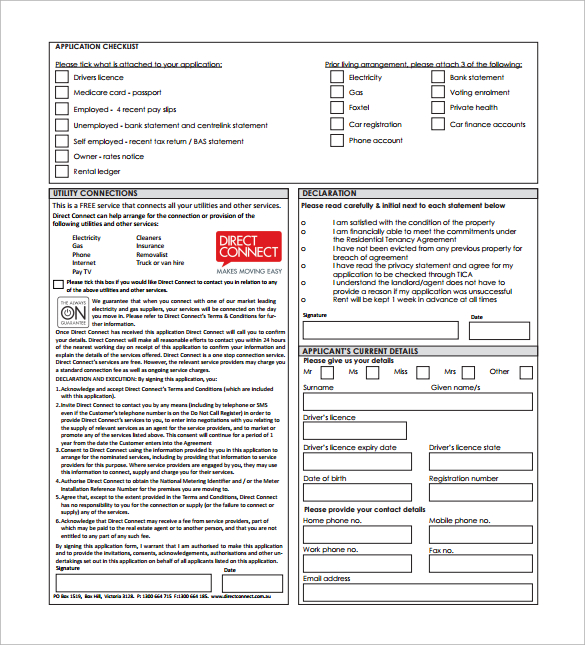Notes:
- This ledger provides a monthly record of rent payments for each tenant.
- It includes details like the rent due, payment received, balance, and payment method.
- The ledger helps landlords track payments and financial status of rental properties.
- Any late payments, partial payments, or outstanding balances should be noted in the “Notes” column.
Weekly Rent Ledger
| Date |
Tenant Name |
Property Address |
Rent Amount |
Payment Method |
Payment Status |
Notes |
| 2024-03-01 |
John Doe |
123 Maple St, Apt 1 |
$1,200 |
Electronic |
Paid |
– |
| 2024-03-01 |
Jane Smith |
456 Oak Ave, Apt 2 |
$1,000 |
Check |
Paid |
Received on 28th Feb |
| 2024-03-08 |
Emily Johnson |
789 Pine Rd, Apt 3 |
$1,500 |
Cash |
Paid |
– |
| 2024-03-08 |
Michael Brown |
321 Cedar Blvd, Apt 4 |
$1,100 |
Electronic |
Pending |
Late fee to be applied |
| 2024-03-15 |
Lisa White |
654 Elm St, Apt 5 |
$950 |
Check |
Paid |
Check cleared on 14th Mar |
| 2024-03-15 |
David Green |
987 Willow Way, Apt 6 |
$1,250 |
Cash |
Paid |
– |
| 2024-03-22 |
Sarah Miller |
234 Birch Ln, Apt 7 |
$1,300 |
Electronic |
Paid |
– |
| 2024-03-22 |
James Hall |
567 Spruce St, Apt 8 |
$1,150 |
Check |
Pending |
Check received, not cashed |
| 2024-03-29 |
Linda Brown |
890 Maple Ave, Apt 9 |
$1,100 |
Electronic |
Paid |
Early payment |
| 2024-03-29 |
Kevin Jones |
123 Oak Rd, Apt 10 |
$1,200 |
Cash |
Paid |
– |
Notes:
- “Rent Amount” is the total due for the week.
- “Payment Method” indicates how the tenant made their payment.
- “Payment Status” shows whether the rent is Paid, Pending, or Overdue.
- “Notes” column includes any additional information regarding the rent transaction.
Browse More Templates On Rental Ledger
Sample Rent Ledger Template
Tenant Rental Ledger Template
How to Create a Rent Ledger: What to Include
Creating a rent ledger is essential for landlords and tenants alike to keep track of rental payments and financial transactions related to leasing property. Here’s how to create one and what to include:
- Tenant and Property Information:
- Start with a section at the top for tenant details (name, contact information) and property information (address, unit number).
- Include lease start and end dates for reference.
- Columns to Include:
- Date: The date when the rent payment was due and the actual date of payment.
- Period Covered: Specify the rental period each payment covers, such as “May 1-31”.
- Description: For detailing the type of transaction (e.g., rent payment, late fee, security deposit).
- Charge/Debit: Any amounts owed by the tenant, including monthly rent and any additional fees.
- Payment/Credit: Actual payments made by the tenant.
- Balance: The running balance, showing if the tenant is in arrears or has prepaid rent. Start with the security deposit (if applicable) and update the balance after each transaction.
- Notes: Optional space for any remarks, like reasons for late payment or details of any simple agreement affecting the payment (e.g., partial payment arrangements).
- Formatting Tips:
- Use a spreadsheet program like Microsoft Excel, Google Sheets, or similar for easy calculations and updates.
- Ensure the ledger is clear and readable with appropriate spacing and bold headings.
- Consider using filters or conditional formatting to highlight overdue payments.
- Maintaining the Ledger:
- Update the ledger promptly after each payment or charge to keep it current.
- Review the ledger regularly with the tenant to ensure agreement on the recorded transactions and balances.
- Keep digital backups of the ledger and any related receipts or payment confirmations for both parties’ records.
- Security and Privacy:
- Securely store the ledger, especially if it contains personal tenant information.
- Share the ledger or relevant portions with the tenant in a privacy-conscious manner, respecting any data protection laws.
- Legal Compliance:
- Check local laws and regulations to ensure your rent ledger includes all required information and complies with any legal requirements concerning rental transactions and records.
- Accessibility:
- Make sure both the landlord and tenant have access to the rent ledger, providing transparency and building trust in the leasing relationship.
- Archiving:
- Once the tenancy ends or annually, archive the ledger for future reference. It might be useful for tax purposes, legal disputes, or as a record of the rental history.
By including these key elements and maintaining the rent ledger diligently, landlords and tenants can ensure an accurate and fair record of all rental transactions, avoiding misunderstandings and disputes.
Rent Ledger Template
Downloadable Rent Ledger Template
Benefits of Rental Ledger
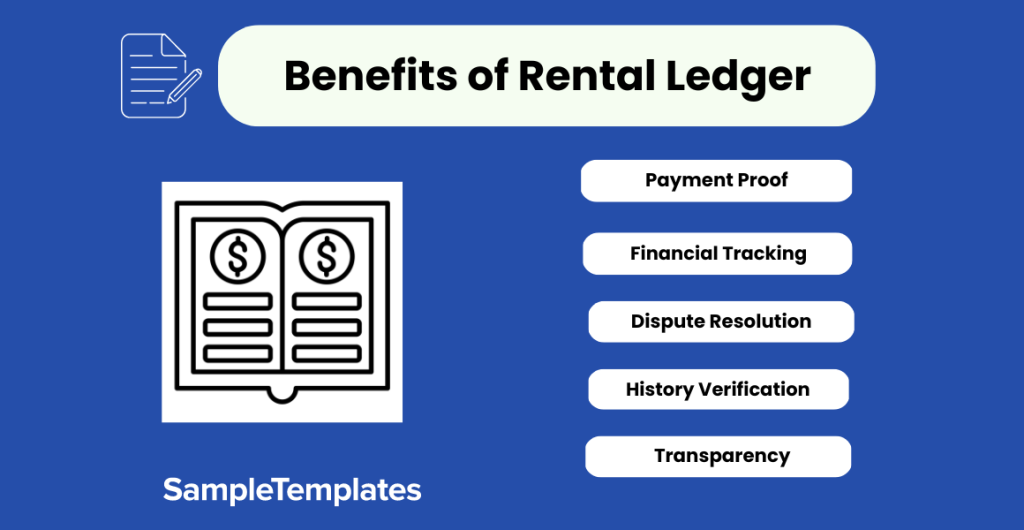
- Proof of Payment: A rental ledger serves as a concrete record of all rent payments made by a tenant, providing undeniable proof of payment in disputes or when required by financial institutions.
- Financial Management: For tenants, it helps in personal financial management, allowing them to track their rent payments over time and sample budget accordingly.
- Dispute Resolution: In case of disagreements between landlords and tenants regarding rent payments, a well-maintained rental ledger can quickly resolve disputes by providing a clear history of transactions.
- Rental History Verification: For tenants moving to new properties, a rental ledger can act as a verification tool, showcasing their reliability and punctuality in making payments to prospective landlords.
- Transparency: It ensures transparency between the landlord and the tenant regarding financial transactions, fostering trust in the landlord-tenant relationship.
- Simplified Accounting: For landlords, a rental ledger simplifies accounting processes, making it easier to track income from rent and monitor the financial performance of their rental property.
- Legal Documentation: It serves as an important legal document that can be used in court if eviction or other legal action becomes necessary due to non-payment of rent.
- Rental Increase Justification: Landlords can use the rental ledger to justify rental increases by documenting consistent rental payments over a period, which can be critical in regions with regulated rent control.
Overall, a rental ledger is a beneficial tool for both tenants and landlords, enhancing financial management, transparency, and legal compliance in rental arrangements.
Rental Ledger Template to Print
How to Fill Out a Rental Ledger?
Filling out a rental ledger correctly is crucial for maintaining an accurate record of rental payments, both for tenants and landlords. Here’s a guide to help you fill one out:
- Tenant Information: At the top of the ledger, fill in the tenant’s name, the rental property address, and the lease period. This identifies who the ledger pertains to and the relevant lease term.
- Column Labels: Ensure your ledger has the following columns, and understand what each represents:
- Date: The date on which each payment was made or received.
- Description/Reference: Details about the payment, such as “monthly rent”, “late fee”, or specific utility payments if included.
- Debit: Any charges or amounts the tenant owes, including rent and any additional fees.
- Credit: Payments made by the tenant. This could include rent payments or other amounts paid towards the debit balance.
- Balance: The running total owed by the tenant after each transaction. This is calculated by subtracting credits from debits.
- Filling in Entries:
- For each payment period (usually monthly), start by entering the date the rent is due under the Date column.
- In the Description/Reference column, write “Monthly Rent” or any other applicable description.
- Under Debit, enter the amount of rent due for that period.
- When a payment is made, record the date of payment in the Date column. Note that this might be different from the rent due date.
- In the Credit column, enter the amount paid by the tenant.
- Calculate the Balance after each transaction. If the tenant pays the full amount, the balance should return to zero or reflect any outstanding balance from previous periods.
- Notes Section: If there are any discrepancies, late payments, or other sample notes you need to make regarding a payment, include a section or column for notes. This could detail arrangements made for late payments, partial payments, or explanations for any fees charged.
- Review and Update Regularly: Ensure that the ledger is updated promptly after each transaction to keep accurate records. Both tenants and landlords should review the ledger regularly to catch and correct any mistakes.
- Signatures: Depending on the formal requirements or for record-keeping purposes, both the tenant and the landlord (or property manager) may sign off on the ledger periodically to acknowledge the accuracy of the information recorded.
- Digital Copies: If the ledger is maintained digitally, ensure it is backed up and that both parties have access to the most current version.
Remember, a rental ledger is a legal document that can be used in disputes or legal proceedings, so accuracy and honesty in recording transactions are paramount.
Rental Ledger Template Free Download
Rental Ledger Template to Download
How Do I Access My Rental Ledger?
Accessing your rental ledger, a record of your rent payments, typically involves the following steps:
- Contact Your Property Manager or Landlord: Initially, reach out to your property manager or landlord directly. They maintain these records and can provide you with a copy upon request.
- Use an Online Tenant Portal: Many property management companies use online tenant portals where you can access your rental history, including your rental ledger. Log in with your credentials to view and download your ledger.
- Email or Written Request: If you prefer or if an online portal isn’t available, send an email or a written request to your landlord or property management company asking for your rental ledger.
- Review Your Lease Agreement: Some lease agreements may outline the process for obtaining records like your rental ledger. Review your simple agreement for any such details.
- Check Local Regulations: Some regions have specific tenant rights regarding access to rental ledgers and other housing documents. Familiarize yourself with local laws to understand your rights and any possible limitations.
Remember to specify the time period you’re interested in and to ask whether there’s any fee involved in obtaining these records, although typically there should not be.
Downloadable Rental Ledger Template
What Is a Rent Ledger?
A rent ledger is a record of rental payments, tracking dates, amounts paid, balances due, and payment methods for property management.
Who Uses a Rent Ledger?
Landlords, property managers, and real estate companies use rent ledgers to monitor tenant payments, financial transactions, and property income.
How Will You Customize Your Rent Ledger?
Customize a rent ledger by including fields for tenant details, payment dates, amounts, method, and notes specific to property management needs.
Can a Rental Ledger Be Edited?
Yes, a rental ledger can be edited to update tenant payments, correct errors, and adjust for changes in rent amounts or payment status.
Is a Rental Ledger Necessary?
Yes, a rental ledger is necessary for tracking rent payments, ensuring financial accuracy, and providing a clear record for both landlords and tenants.
In conclusion, the rental ledger stands as a vital tool for both landlords and tenants, ensuring transparency and accountability in rental transactions. By maintaining accurate records of payments and expenses, it fosters trust, facilitates dispute resolution, and promotes financial responsibility.
If you have any DMCA issues on this post, please contact us!
